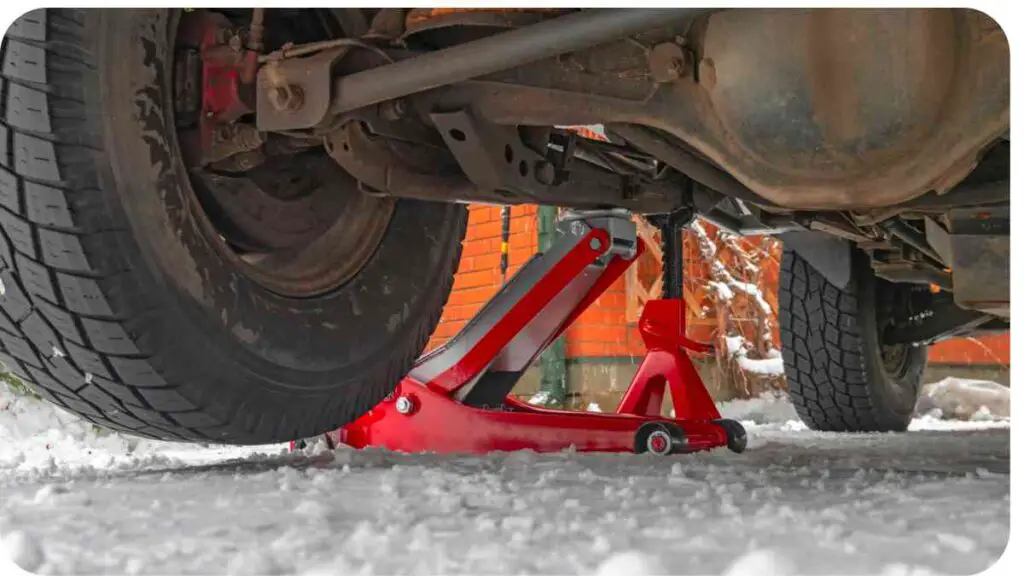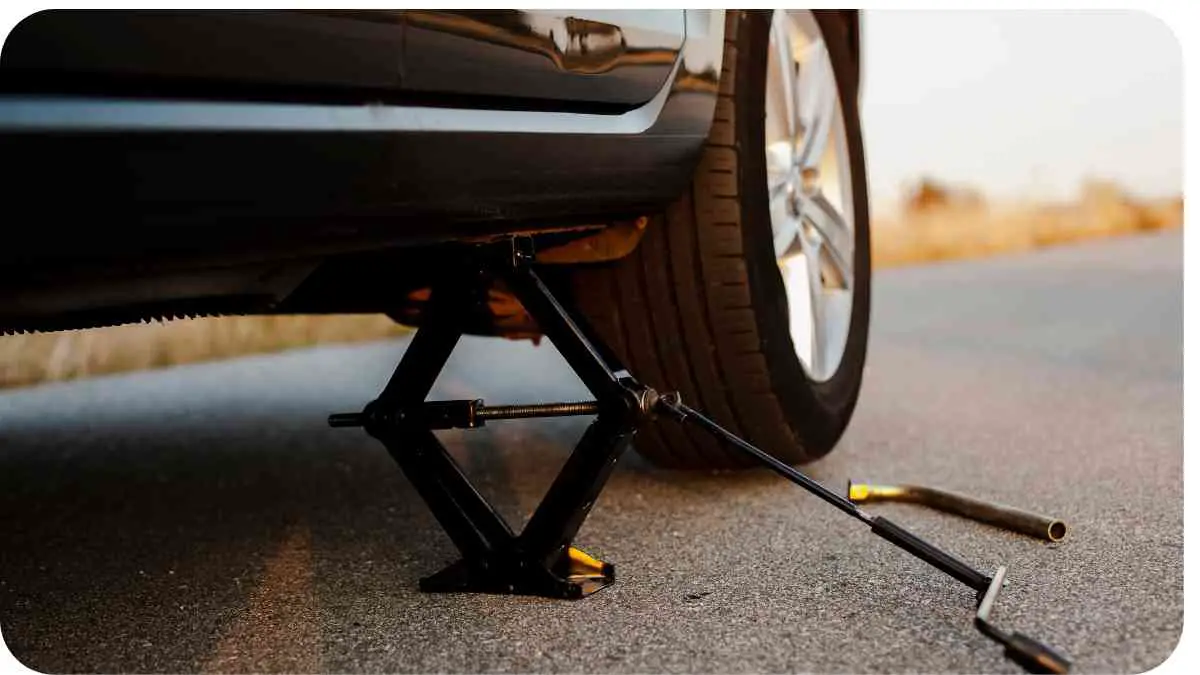Off-road enthusiasts and adventurers understand the value of a reliable Hi-Lift Jack when venturing into challenging terrains.
However, the power and utility of these jacks come with a responsibility to use them safely. In this comprehensive guide, we’ll delve into the intricacies of using a Hi-Lift Jack securely, providing insights, tips, and real-world examples to ensure a safe off-road experience.
| Takeaways |
|---|
| 1. Prioritize safety above all else when using a Hi-Lift Jack. |
| 2. Understand the components and proper setup of your Hi-Lift Jack for effective usage. |
| 3. Always use personal protective equipment (PPE) and follow recommended safety guidelines. |
| 4. Regularly inspect your Hi-Lift Jack for any signs of wear or damage. |
| 5. Familiarize yourself with common mistakes to avoid and troubleshooting techniques. |
| 6. Consider legal and environmental considerations during off-road adventures. |
| 7. Learn from real-life scenarios and expert advice to enhance your Hi-Lift Jack experience. |
Understanding Your Hi-Lift Jack

Components of a Hi-Lift Jack
Before diving into usage, it’s essential to understand the key components of a Hi-Lift Jack. Table 1 illustrates the various parts, from the nose cap to the foot plate, giving you a clear reference as you become acquainted with your equipment.
Proper tire rotation is crucial for maintaining optimal performance on rugged terrains. Learn the correct method to extend the lifespan of your off-road tires and enhance overall driving safety.
Table 1: Components of a Hi-Lift Jack
| Component | Description |
|---|---|
| Nose Cap | Top end of the jack |
| Climbing Pins | Engage with the holes on the bar |
| Handle | Provides leverage for lifting |
| Main Bar | Long steel bar for lifting |
| Base Plate | Supports the jack on the ground |
| Foot Plate | Larger plate for stability |
Different Models and Their Uses
Choosing the right Hi-Lift Jack depends on your vehicle and specific needs. Table 2 outlines the main types of Hi-Lift Jacks and their recommended applications, helping you make an informed decision.
Table 2: Types of Hi-Lift Jacks and Recommended Uses
| Model | Recommended Use |
|---|---|
| All-Cast | Versatile, suitable for various off-road situations |
| Cast/Steel | Durable and robust, ideal for heavy-duty applications |
| X-Treme | Enhanced features, designed for extreme conditions |
Safety Gear and Precautions
Safety should be your top priority when using a Hi-Lift Jack. Personal Protective Equipment (PPE) is crucial. Table 3 provides a checklist of essential safety gear, ensuring you are adequately prepared for any off-road adventure.
Keep your off-road vehicle running smoothly with our comprehensive guide on changing oil. Empower yourself with the knowledge to perform regular maintenance, ensuring your vehicle’s longevity and peak performance on challenging trails.
Table 3: Essential Safety Gear for Hi-Lift Jack Usage
| Safety Gear | Purpose |
|---|---|
| Gloves | Protect hands from sharp edges |
| Safety Goggles | Shield eyes from debris and dirt |
| Sturdy Footwear | Ensure stable footing during operation |
| Reflective Vest | Increase visibility, especially at night |
Basic Setup and Inspection
Now that you have a solid understanding of your Hi-Lift Jack and the necessary safety gear, it’s time to move on to the basic setup and inspection. Before every use, a thorough inspection is crucial to identify any potential issues that might compromise safety. Table 4 provides a step-by-step guide for setting up your Hi-Lift Jack and ensuring it’s in optimal condition.
Table 4: Hi-Lift Jack Setup and Inspection Checklist
| Step | Procedure |
|---|---|
| 1. Lubrication | Ensure all moving parts are well lubricated |
| 2. Visual Check | Inspect for visible damages or wear |
| 3. Climbing Pins | Verify climbing pins engage properly |
| 4. Handle Locking | Confirm the handle is securely locked |
| 5. Base Plate | Check for any deformities or cracks |
| 6. Foot Plate | Inspect the stability and condition of the foot plate |
Proper Lifting Techniques

Proper lifting techniques are paramount when using a Hi-Lift Jack to avoid accidents and damage. Table 5 breaks down the key steps for lifting your vehicle safely, ensuring a controlled and secure process.
Table 5: Steps for Properly Lifting Your Vehicle
| Step | Procedure |
|---|---|
| 1. Positioning | Place the jack in a stable and level position |
| 2. Securing Load | Use straps or clamps to secure the load |
| 3. Lifting Stages | Lift the vehicle in stages, not all at once |
| 4. Check Stability | Pause and check stability at each lifting stage |
Remember, rushing through the lifting process can lead to accidents. Take your time and ensure each step is executed correctly.
Common Mistakes to Avoid
Even experienced off-roaders can make mistakes when using a Hi-Lift Jack. Understanding and avoiding these common pitfalls is essential for safe operation. Table 6 highlights some frequent mistakes and how to prevent them.
Elevate your off-road driving skills with our expert tips. From conquering diverse terrains to navigating obstacles, this guide provides invaluable insights for off-road enthusiasts seeking to enhance their proficiency and confidence behind the wheel.
Table 6: Common Hi-Lift Jack Mistakes and Prevention
| Mistake | Prevention |
|---|---|
| Overloading the Jack | Know your vehicle’s weight limits |
| Incorrect Base Placement | Choose a stable and level surface |
| Not Using Safety Straps | Always secure the load with safety straps |
Troubleshooting and Maintenance
No piece of equipment is flawless, and knowing how to troubleshoot common issues is crucial for a smooth off-road experience. Table 7 provides insights into troubleshooting and maintenance, ensuring your Hi-Lift Jack remains reliable over time.
Table 7: Hi-Lift Jack Troubleshooting and Maintenance Tips
| Issue | Solution |
|---|---|
| Stiff Operation | Apply lubricant to moving parts |
| Handle Slips | Tighten handle locking mechanism |
| Base Plate Instability | Check for debris and ensure a flat surface |
| Climbing Pins Not Engaging | Inspect climbing pins and clean if necessary |
Regular inspection and maintenance are vital to catch issues early on, preventing potential failures during critical moments.
Real-Life Scenarios
Learning from real-life scenarios can be invaluable when it comes to using a Hi-Lift Jack. Table 8 presents case studies of successful usage and instances where problems were encountered, offering practical insights for your own off-road adventures.
Ensure your safety on off-road adventures by understanding the importance of off-road safety equipment. This comprehensive guide highlights the must-have gear, empowering you to explore with confidence and preparedness in challenging off-road environments.
Table 8: Hi-Lift Jack Real-Life Scenarios
| Scenario Description | Lessons Learned |
|---|---|
| Vehicle Stuck in Mud | Properly secure the base for stability |
| Jack Slipping During Lifting | Double-check climbing pin engagement |
| Smooth Lifting on Uneven Terrain | Utilize a base plate for a level surface |
Understanding these scenarios can help you make informed decisions in similar situations and avoid potential pitfalls.
Tips from Experts
Drawing on the experiences of seasoned off-roaders and industry professionals can provide a wealth of knowledge. Table 9 features insights and recommendations from experts in the field, offering additional guidance for safe and effective Hi-Lift Jack usage.
Table 9: Tips from Off-Road Experts
| Expert | Tip |
|---|---|
| Sarah Offroad | “Always carry a base plate for stability.” |
| Off-Road Pro Magazine | “Inspect your Hi-Lift Jack before each trip.” |
Legal and Environmental Considerations
Responsible off-road enthusiasts not only prioritize safety but also adhere to legal and environmental guidelines. Table 10 outlines the legal and environmental considerations when using a Hi-Lift Jack, ensuring that your adventures are not only thrilling but also respectful of laws and nature.
Master the art of winching with our detailed guide. From selecting the right equipment to safe operation, this resource equips you with essential knowledge, ensuring a secure and successful recovery when faced with off-road challenges.
Table 10: Legal and Environmental Considerations for Hi-Lift Jack Usage
| Consideration | Guidance |
|---|---|
| Vehicle Weight Limits | Comply with manufacturer and legal weight limits |
| Off-Road Permits | Obtain necessary permits for off-road activities |
| Environmental Impact | Minimize impact on flora, fauna, and terrain |
| Waste Disposal | Dispose of waste responsibly |
Adhering to legal requirements and minimizing environmental impact contributes to sustainable off-road practices.
Frequently Asked Questions
Addressing common concerns and misconceptions is essential for providing a complete guide to using a Hi-Lift Jack safely. Table 11 compiles frequently asked questions, offering clear and concise answers to common queries.
Table 11: Frequently Asked Questions about Hi-Lift Jacks
| Question | Answer |
|---|---|
| Can I use a Hi-Lift Jack on any vehicle? | Check the manufacturer’s recommendations and guidelines |
| How often should I lubricate the jack? | Lubricate before each use and regularly inspect moving parts |
| Are Hi-Lift Jacks suitable for off-road motorcycles? | Some models may be, but verify with the manufacturer |
Clearing up these common questions ensures users have accurate information for their off-road endeavors.
Conclusion
In conclusion, using a Hi-Lift Jack safely is not just about lifting a vehicle; it’s about understanding your equipment, prioritizing safety, and being mindful of legal and environmental considerations.
By following the comprehensive guide provided, you’ll not only enhance your off-road experiences but also contribute to a culture of responsible and enjoyable exploration. Remember, safety first, adventure second!
Further Reading
For those eager to delve deeper into the world of Hi-Lift Jacks and off-road safety, the following resources provide valuable insights and tips:
- Complete Guide to Hi-Lift Jacks: Safety Tips, Accessories, and More
- Scout of Mind presents a comprehensive guide covering all aspects of Hi-Lift Jacks, from safety tips to exploring various accessories. Gain a deeper understanding of these essential off-road tools.
- Hi-Lift Jack Dos and Don’ts
- MotorTrend offers a practical guide outlining the dos and don’ts of using a Hi-Lift Jack. Learn from their expertise to ensure safe and effective usage of your jack.
- How to Use a High Lift Jack
- WhichCar provides step-by-step instructions on how to use a High Lift Jack for recovery purposes. This resource is a valuable addition for those looking for detailed usage guidance.
FAQs
What vehicles are suitable for a Hi-Lift Jack?
The suitability of a Hi-Lift Jack depends on the manufacturer’s recommendations. Always check the guidelines to ensure compatibility with your specific vehicle.
How often should I lubricate my Hi-Lift Jack?
It is advisable to lubricate your Hi-Lift Jack before each use. Regularly inspecting moving parts and applying lubrication ensures smooth operation.
Can I use a Hi-Lift Jack on off-road motorcycles?
Some Hi-Lift Jack models may be suitable for off-road motorcycles, but it’s essential to verify compatibility with the manufacturer’s specifications.
What are the legal considerations when using a Hi-Lift Jack?
Ensure compliance with legal weight limits for your vehicle, obtain necessary off-road permits, and dispose of waste responsibly to adhere to legal requirements.
How can I minimize environmental impact while using a Hi-Lift Jack?
Minimize environmental impact by staying on designated trails, avoiding damage to flora and fauna, and practicing responsible waste disposal during off-road activities.

Hi there! I’m Hellen James, and I’m the author of Unified Off-roads. I’ve been driving off-road for more than ten years, and I’ve had a lot of fun in that time—and a few not-so-great experiences too. But I’ve always wanted to help other people get started off-roading, so I decided to start this blog to share my knowledge with others.


